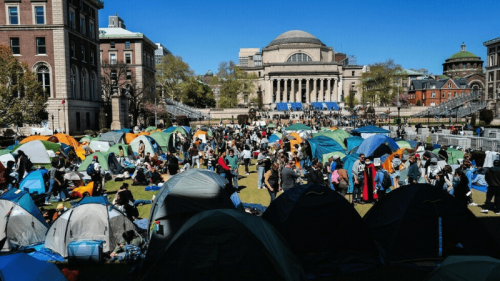 Pakistan has many endowments which should have made it possible to better connect with the world than it has actually done.
Pakistan has many endowments which should have made it possible to better connect with the world than it has actually done.
Had Pakistan correctly played its part on the rapidly changing world economic stage, it would have today trade as a much larger part of its national economy, external capital flows taking up a much higher part of total domestic investment, the country a more cherished destination for foreign firms, a larger Pakistani presence in the international corporate sector. The failure in most of these areas is because of the failure of public policy.
For more than a decade and half, economists have been talking about the process of globalisation and how it affects different parts of the world. However, as the Nobel Prize winning economist Joseph Stiglitz pointed out, globalisation has many discontents. That not withstanding, the process has brought great many rewards to the countries similar to Pakistan – countries with large and young populations, with well endowed agricultural sector, with well developed engineering skills, and with a location that should have made the country an important point of transit trade for the rapidly growing economies in the region.
Pakistan started out its existence much better connected with the outside world. In 1947, the year of country’s birth, international trade accounted for two-thirds of its gross domestic product. India and Afghanistan were the two most important trading partners, accounting for more than two-thirds of exports and imports.
The British, who ruled the area that was now part of Pakistan, had deliberately developed its economy to provide food to the food deficit areas in the northeastern parts of their large Indian domain and to supply the textile mills of Ahmedabad and Bombay the raw cotton they needed.
They also encouraged the Pathan tribes in the northwestern parts of their empire and the southern provinces of Afghanistan to trade with one another. They understood that the Pathans that straddled the border were both good fighters and good traders. It was better to have them engaged in commerce than in war.
This approach to economic development was endorsed by economic theory. A century and half earlier, Adam Smith had identified international trade as an important contributor to economic growth. It helped to expand markets for the domestic producers when their specialization in the development of worker’s skills encouraged increased productivity and output beyond the domestic capacity to absorb the increased flow of goods.
Trade also kept a check on domestic prices since only those goods will come into the country that were cheaper to producer for the exporter than for the importer to obtain from the domestic market. After Adam Smith, economists went on to formulate what they called the “gravity model of trade” which suggested that the direction of trade was mostly determined by the size of the trading partners and distance between them. In 1947, India was not only the closest market for the producers in Pakistan, it was also the best connected with the country. The same was the case with Afghanistan.
But things did not work out that way. Within two years of Pakistan’s birth, relations with both India and Afghanistan had soured to such an extent that trade with them came to a virtual standstill. In this, it must be said, the initiative was not taken by Karachi, Pakistan’s first capital, but by New Delhi and Kabul. Both had opposed the creation of Pakistan as an independent state for the Muslim population of British India. For the Congress Party of India, Pakistan’s creation meant a rejection of the “idea of India” – a state for all the diverse people of South Asia. For the rulers of Kabul, the creation of Pakistan meant making permanent the border the British had drawn across the land occupied by the Pathan tribes. They regarded this as an unnatural border and, therefore, became the only country not to recognise the Pakistani state when it was created.
For the next half century, policymakers in Pakistan were occupied with searching markets for their traditional exports in countries other than India and Afghanistan. There was some success in this endeavor. Over time, some distant markets were found for cotton, leather and textiles that had been mostly exported to India in the 1940s while, as result of the failure of public policy, the country became a net importer of food grains.
Today, sixty years after the creation of Pakistan, the United States is Pakistan’s largest trading partner. Thousands of miles away from the country’s border, buying mostly textiles, the United States is not the most important market suggested by the gravity model of trade and textile is not the product that would bring dynamism to the country’s trading sector. In other words, policymakers have placed their eggs in the wrong basket. It is no wonder that in the extremely dynamic international trading system that has been created as a result of the process of globalisation, Pakistan is only a marginal player.
Could policymakers even at this relative late stage turn the external sector around and begin to gain for the country what is available in the global trading system and the global financial markets? The answer to the question is yes but it would need a fairly significant restructuring of the domestic economy.
Public policy should aim to create a number of niches for Pakistani exporters; they are available in the more rapidly growing parts of the international trading system. Given Pakistan’s endowment it will be right to focus on the development of three types of products and services. The first is processed agricultural products. Pakistani made “masalas” and condiments have begun to be seen in the shelves of the ethnic markets in the United States. There is considerable room available for further expansion of this line of products.
Then there is the possibility of developing trade in such high value added agricultural products as fruits, vegetables, and flowers for the rapidly developing markets in the Middle East. This will require state investment in research and infrastructure in order to ensure that the line of communication for this kind of trade develops so that products can move quickly.
The third area with enormous potential is the use of its young and trainable population to produce the products and services needed by the people-short economies of the West and the Middle East. Pakistan has made some inroads into this area but unfortunately at the lower end. To capture the more high value lines of products and services will need the identifation of where the skills are needed, development of the skills, entering the markets once they have been identified, creating a supply chain that is reliable and does not operate with interruption.
The fourth area is to develop the country as a point of transit for trade in the region. Pakistan occupies an almost unique geographic place. It is the only country besides Nepal, Bhutan and Myanmar that shares borders with China and India, the world’s two largest countries in terms of population and also the most rapidly growing in terms of the development of their economies.
The trade between these two countries is increasing rapidly, a significant amount of it could go through Pakistan provided appropriate infrastructure was created and transit rights were granted. Not too far from Pakistan’s northern and western borders are the oil rich countries of Central Asia and the Middle East who could use the Pakistani territory to transmit gas and oil to such areas of high levels of consumption as China and India.
The fifth area needing government’s attention would also be the most innovative and perhaps the one that will bring in the highest rewards. The state should stet up two “triangles”, one in central Punjab encompassing the cities of Gujrat, Gurnanwala and Sialkot, for the creation of a parts and components industry aimed at providing inputs to large manufacturers around the globe who increasingly rely on outside suppliers for the inputs they need.
These cities have the beginnings of this industry but they need the infrastructure (roads and airports), research and development, and skill development institutions that only the state can provide. The second triangle should be set up in the deserts of Sindh to cater to the outdoor needs of the Arabs who have always been looking for desert related recreational activities in Pakistan. Once again the state will need to create the infrastructure such a triangle will require to become attractive for foreigners.
Perhaps, the best way of taking advantage of the opportunities that still exist would be to set up a Trade Development Authority headed by a deputy prime minister with highly skilled staff whose compensation is linked to performance. The Authority should be giving the target to aim for trade reaching 80 per cent of the GDP by the year 2020.
By that time Pakistan’s economy could reach $500 billion. This means that the value of trade will have to reach $320 billion in terms of both exports and imports.
While the economy would be three times its present size in real terms, international trade would be 8 to 10 times as large. This is not an impossible task to achieve. It can be done but it will need real political, bureaucratic, economic, and managerial effort. If Pakistan succeeds, it would have ensured a better place for itself in the international economy and, in the process, also create a vibrant domestic economy.













































Dear visitor, the comments section is undergoing an overhaul and will return soon.